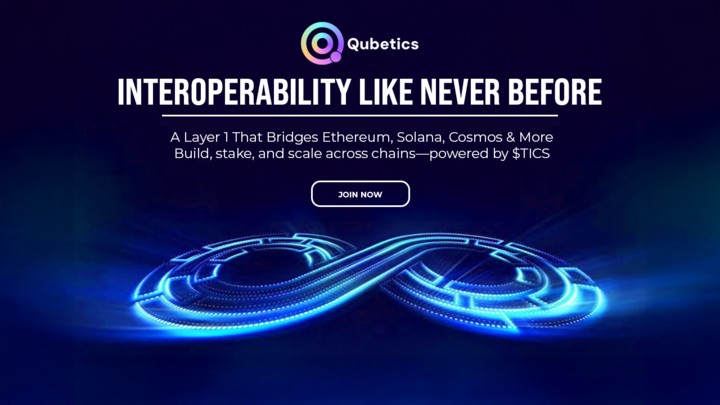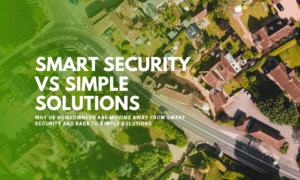The altcoin market is heating up as 2025 approaches, and everyone’s asking the same question—what are the best altcoins to buy now before the next crypto boom hits? In a market that’s constantly evolving, smart participants know the key isn’t always chasing hype, but identifying projects solving real problems. From interoperability and scalability to cross-chain utility and global payments, a handful of altcoins are positioning themselves as next-gen infrastructure plays with actual staying power.
This cycle won’t just reward speed or hype—it’s going to reward integration, efficiency, and network effects. Whether it’s enabling high-frequency trading, building bridges between chains, or empowering real-world financial applications, some coins are clearly outpacing the rest. One project—Qubetics—is drawing serious attention for doing all three, backed by a lightning-fast presale model and eye-catching ROI potential.
Here’s a deep dive into five crypto powerhouses that are helping shape the decentralized economy. If you’re looking for the best altcoins to buy now, these are the names to keep on your radar—especially the one in the number one spot.
1. Qubetics ($TICS) — The Interoperability Game-Changer for 2025
Qubetics is leading the charge when it comes to delivering seamless blockchain interoperability, positioning itself as the most functional Web3 aggregator in the space. Most blockchains today exist in silos—Ethereum, Solana, BNB Chain—they’re powerful on their own but struggle to work together. That’s where Qubetics flips the script. Its platform offers true cross-chain functionality, enabling users and developers to interact with multiple networks from a single unified interface. Whether someone is transferring assets, building dApps, or moving value across chains, Qubetics handles it with native-level speed and efficiency. That alone makes it one of the best altcoins to buy now.
Central to this interoperability push is the QubeQode IDE, an all-in-one development environment that’s removing the technical barriers for building across blockchains. Imagine a DeFi startup that wants to launch liquidity pools on Ethereum, Polkadot, and Cosmos simultaneously. With QubeQode, they can do it without needing to rewrite contracts in three different languages. It’s also ideal for enterprise users who want to offer blockchain-powered services without locking into one chain. From tokenized real estate to cross-border payroll apps, Qubetics is giving builders the flexibility to scale—and that flexibility is exactly why it tops every serious list of the best altcoins to buy now.
Stage 29 of the Qubetics presale is officially live, and the stats are getting louder. $0.1573 per token. $16 million raised. Over 507 million $TICS sold. And more than 24,600 holders onboarded. Every week, the price goes up 10%—a built-in countdown that keeps early participation in high demand. Crunching the numbers, the case builds quickly. If $TICS hits $1, you’re looking at a 535.65% return. At $5, that’s 3,078%. And $10 or $15? That’d be a game-changing 6,256% to 9,434.71%. A hundred bucks now could be worth over $9,500 later.
With the mainnet just around the corner in Q2 2025, and its real-world utility gaining traction, this is why Qubetics is widely seen as the best crypto presale in the current market cycle.
2. SEI Network ($SEI) — Built for High-Frequency, On-Chain Trading
SEI Network has built a name for itself by targeting a specific niche in the blockchain space: high-performance trading infrastructure. As a Layer 1 optimized for decentralized exchanges (DEXs) and financial apps, SEI delivers blazing-fast throughput and minimal latency, making it ideal for builders of high-frequency protocols, perpetuals platforms, and real-time order books. While most chains struggle with congestion and slow settlement speeds, SEI’s parallelization model ensures that it processes transactions efficiently without bottlenecks. That gives it a real edge as DeFi moves toward more performance-driven architecture.
One of the biggest differentiators for SEI is its use of native order matching, which eliminates the need for clunky off-chain coordination. This allows decentralized platforms built on SEI to compete with centralized exchanges in terms of user experience, speed, and reliability. SEI also benefits from being part of the broader Cosmos ecosystem, meaning it’s inherently interoperable with other IBC-enabled chains like Osmosis and Juno. As institutional-grade DeFi continues to grow, the demand for fast, scalable execution environments will rise—and SEI is well-positioned to serve that wave.
For 2025, the long-term narrative around SEI looks solid. As trading becomes more granular and liquidity fragments across chains, platforms like SEI will be essential for bringing professional-level tools into DeFi. While the spotlight still tends to fall on Ethereum and Solana, SEI is steadily becoming the go-to network for traders who demand more from their infrastructure. It’s definitely one to keep an eye on as the market matures.
3. XRP ($XRP) — A Global Payments Workhorse With Fresh Momentum
XRP has been a controversial but persistent presence in the crypto world, and now, after years of regulatory uncertainty, it’s finally seeing some much-needed clarity. Ripple’s legal battle with the SEC reached a turning point when the courts ruled that XRP, in certain contexts, is not considered a security. That single outcome reignited institutional interest and laid the groundwork for broader use of RippleNet and its flagship product—On-Demand Liquidity (ODL).
Ripple’s vision has always been centered on frictionless, cross-border payments, and with XRP acting as a bridge asset, it enables near-instant settlement between global financial institutions. Unlike traditional payment networks that can take days to process international transfers, RippleNet’s infrastructure allows payments to clear in seconds. Already adopted in countries like Japan, UAE, and the Philippines, XRP is being used in live corridors to move millions across borders every day.
With regulatory pressure easing and enterprise partnerships ramping up, XRP could finally be stepping into its long-anticipated role as the SWIFT alternative for blockchain-powered payments. As CBDCs, tokenized assets, and stablecoin usage rise in mainstream finance, the need for fast, low-cost, and compliant infrastructure is undeniable. XRP may not be new, but it remains one of the most battle-tested assets in crypto—and its next chapter could be its most rewarding yet.
4. Cosmos ($ATOM) — The Internet of Blockchains Keeps Growing
Cosmos is quietly powering one of the most important trends in blockchain: sovereign interoperability. Instead of forcing dApps to fight for limited space on a single monolithic chain, Cosmos offers an ecosystem of app-specific blockchains that communicate using the Inter-Blockchain Communication Protocol (IBC). And it’s working—dozens of chains are actively transacting, securing, and scaling thanks to Cosmos’ modular architecture.
ATOM is at the center of this ecosystem. With new upgrades like Interchain Security and liquid staking protocols, ATOM is being positioned as a security layer for the entire Cosmos network. That’s a huge leap toward economic sustainability, and it could make staking ATOM more lucrative in the long term. Unlike many L1s that compete with each other for dev mindshare, Cosmos is fostering collaboration—enabling builders to create highly specialized chains that interoperate seamlessly.
What makes Cosmos compelling heading into 2025 is its commitment to simplicity and scalability. As the crypto space grows more complex, modular ecosystems like Cosmos provide the framework to keep things usable and adaptable. If the multi-chain thesis holds true—and all signs suggest it will—then Cosmos will be one of the foundational protocols shaping that future.
5. Polkadot ($DOT) — Modular Chain Infrastructure With Real-World Flexibility
Polkadot doesn’t seek to be another smart contract chain—it wants to be the underlying infrastructure that connects everything. As a Layer 0 protocol, Polkadot enables multiple parachains to run in parallel, each tailored for specific applications, while sharing security and messaging capabilities. This makes Polkadot incredibly flexible for builders looking to design application-specific environments without giving up on interoperability or performance.
What’s been exciting to watch in 2024 and into 2025 is Polkadot’s growing ecosystem of parachains. These custom blockchains—built with Substrate—are launching their own networks, applications, and economies. Acala (DeFi), Moonbeam (Ethereum compatibility), and Astar (dApp platform) are just a few examples. As each one matures, the entire Polkadot network benefits from more activity, more validation, and deeper network effects.
As we head into another wave of Web3 development, Polkadot’s flexible architecture positions it as a key enabler of modular blockchain growth. It may not make the loudest headlines, but it’s quietly becoming one of the most technically advanced and well-governed ecosystems in crypto.
Conclusion: Qubetics Leads the Way Into Interoperable Finance
There’s a reason Qubetics keeps showing up at the top of lists like this one. It’s not just about hype—it’s about substance. While other projects are still figuring out how to integrate across blockchains, Qubetics is already doing it with speed and simplicity. From its QubeQode IDE to its deep integration with leading chains, it’s delivering tools that builders, businesses, and everyday users can access without the headaches that have plagued Web3 for years. That alone makes it the best altcoin to buy now for anyone betting on the future of interoperability.
So whether it’s seamless cross-chain payments, multi-chain dApp deployment, or just being early to a project with legs, Qubetics checks every box. For those scanning the horizon for the best altcoins to buy now, it’s not just another token—it’s the one redefining how blockchains talk to each other.
For More Information:
Qubetics: https://qubetics.com
Presale: https://buy.qubetics.com/
Telegram: https://t.me/qubetics
Twitter: https://x.com/qubetics
FAQs
Why is Qubetics considered one of the best altcoins to buy now?
Qubetics is delivering real interoperability through its Web3 aggregator, with a strong presale, developer-ready IDE, and high ROI potential.
What makes the Qubetics presale unique?
Each stage lasts only 7 days, with a built-in 10% weekly price hike and over $16M raised. It’s structured for fast, transparent momentum.
How does Qubetics enable cross-chain functionality?
Qubetics uses its QubeQode IDE and Web3 aggregation layer to let users interact across chains without switching wallets or protocols.






































